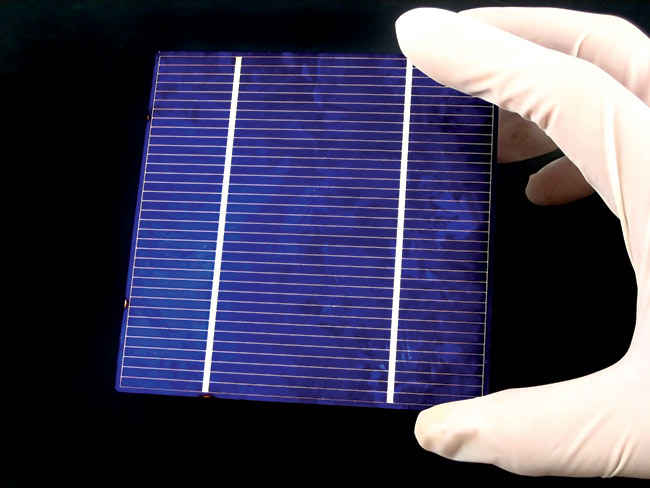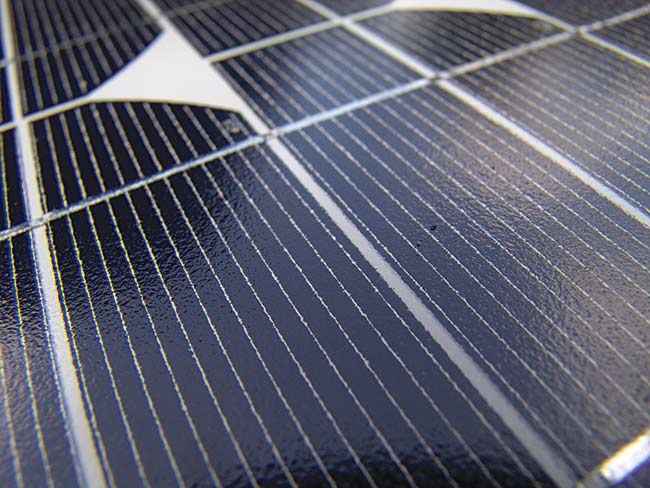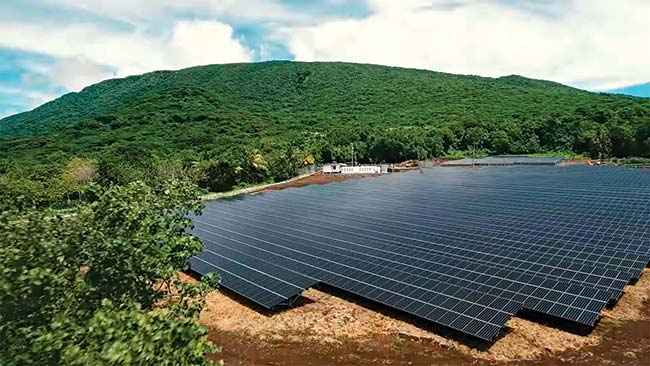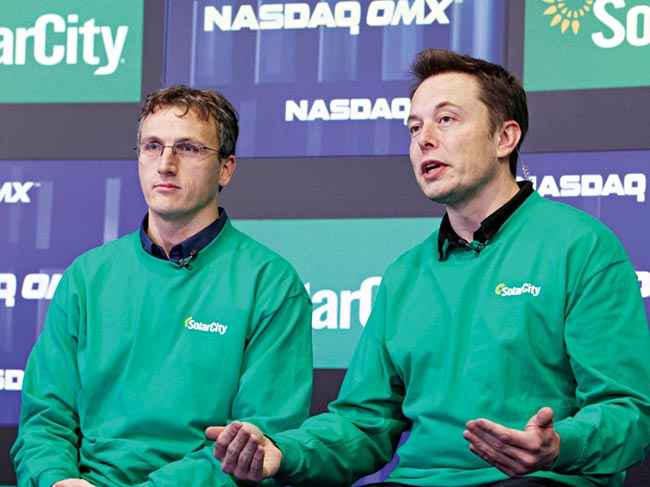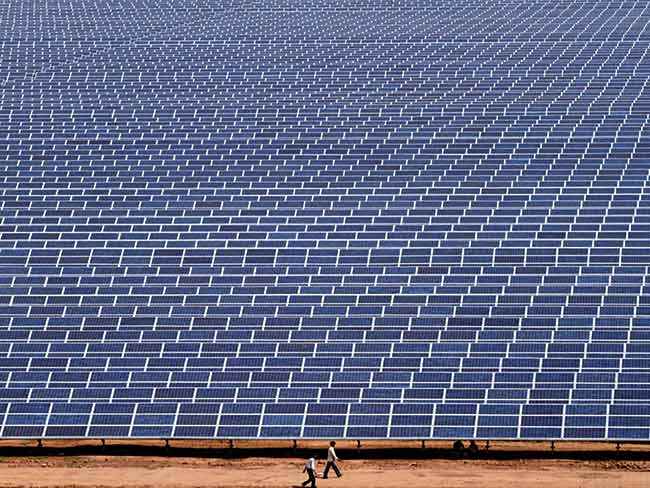Solar Power for everybody is actually possible today
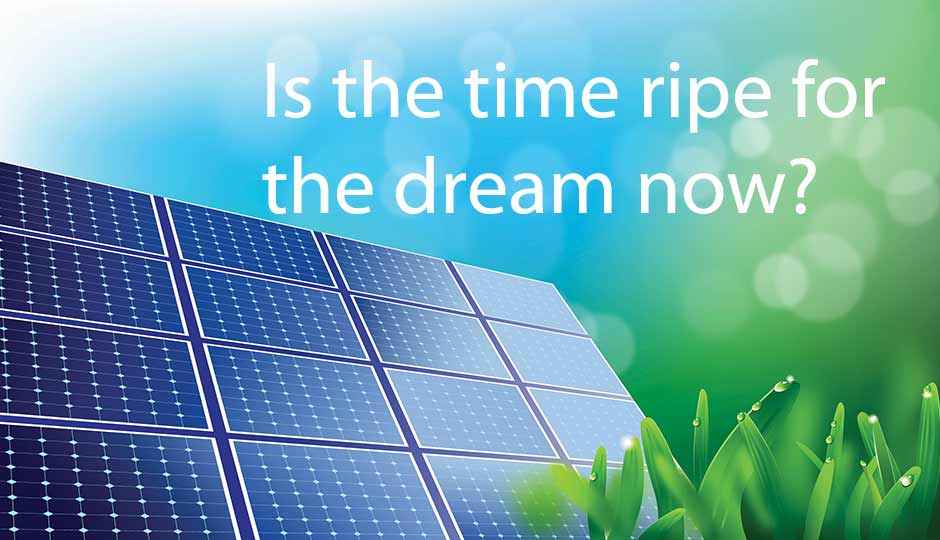
Solar energy is your key to free power, and right now it's more real than ever
Tesla’s project of powering an entire American island using solar power, freeing the citizens from depending on diesel energy has revived the excitement surrounding solar power. Is it a one-off or has the time truly come for solar energy?
It’s no secret that the sun is a great source of energy. After all, it is what powers all the living things on this planet! In fact, the sun showers on the earth enough energy to take care of the world’s power requirements multiple times over.
On the plus side, it doesn’t produce carbon dioxide emissions. So, you wouldn’t have to worry about adverse environmental effects on that front. Another advantage is that the sun is practically inexhaustible. Also, the sun doesn’t charge any money for making use of its energy!
So, the question is how the people on earth can turn the sunlight into electricity that we can use?
How to harness energy from the sun
To do this, old-school solar technology makes use of large crystals that are made of silicon. These crystals generate electrical current when struck with light. The reason why silicon does this is because the electrons in the crystal move when they are exposed to light. (In many materials, the electrons would just jiggle around when struck by light- the reason why heat is generated.)
A red boiling pot of energy
Inside a crystal, the bonds that exist between the silicon atoms are made of electrons which are shared among the atoms in the crystal. When the light is absorbed, sometimes an electron in a bond gets excited up to a high energy level and therefore is able to move more freely than when it was bound. This means that the electron can now freely move around in the crystal, resulting in a current in the crystal.
Silicon has the advantage of turning a decent amount of the light energy into electrical energy.
The downside to using silicon
The downside is that it’s quite expensive since big crystals aren’t easy to grow.
But there is some good news: newer materials make use of smaller and cheaper crystals like copper-indium-gallium-selenide. These can even be shaped into thin flexible films. This is called the “thin-film” solar technology.
Efficient but costly
But the catch is that this technology isn’t as good when it comes to turning light into electricity compared to silicon. Even in the U.S – the wealthiest nation in the world, solar energy accounts for just a small portion of their complete electricity generation – the reason being, of course, the expense involved. Generating electricity from coal is cheaper but highly polluting.
To get a perspective on how expensive solar power is at the moment, it would be about five times as expensive as what you pay for the electricity which comes out of the power outlets in your home.
This cost-factor has been a major reason why the world hasn’t been able to adopt solar panels widely even though they have been considered as a way to replace fossil fuels.
Is the action of solar cells similar to photosynthesis?
One comparison that many laymen make is between the functioning of solar cells and photosynthesis. But that’s not entirely an accurate comparison. For instead of just creating electricity, plants absorb light and use the electron to alter a chemical bond within the plant meaning they generate fuel for their consumption.
Photosynthesis: a different ballgame
Now, it would be super-cool if scientists were able to create a solar cell which, instead of creating electricity, made fuel. Aside from the fuel advantage, it would also help deal with the effects of global warming because by mimicking a plant, the solar cell would also be taking in the CO2 from the air to generate the fuel.
The power efficiency of a cell
Since we use solar cells to capture sunlight and turn it into electricity, it’s worth looking at the power efficiency of a typical crystalline silicon cell.
The power efficacy of such a cell is in the range of 22 to 23 percent (meaning, 22 or 23 percent of light that strikes a cell is converted into electricity). But that’s the case with the industrial variant. The ones which are affordable for an individual to put on the rooftop have a power efficacy that lies somewhere within the 15 to 18 percent range. The most efficient variants are the ones that are used in satellites – these could have power efficiencies which approach a whopping 50 percent.
More power to you
Powering an entire island with solar energy
Solar City Corporation is one of the more significant players in the solar energy products arena. Based in America, the company recently merged with the Elon Musk-led Tesla. Even though the merger was completed mere weeks back, a glimpse of what such a union could bring to the world has already been shown – in the way of an entire island that’s powered with solar energy.
The island in question is the small island of Ta’u in American Samoa. It’s over 4,000 miles from the West Coast of the United States. The island is a 17-square mile volcanic island that has just a single road that runs through it.
The project made use of the prowess of SolarCity power generation and Tesla’s Powerpack-based storage. Before this, the island was relying a lot on a diesel generator grid.
The reliance on diesel as a fuel to generate power isn’t all that unique. Many island communities rely on burning fossil fuel to maintain an electrical grid. However, using a fuel which has to be shipped in at great costs from long distances poses a large number of problems. Also, such a scenario causes a lot of temporary blackouts. The costs of solar generally can be recouped only in a long time once the grid power becomes convenient and easily available. However, the financial benefits get accrued way more quickly when you are shipping in fuel and burning it as the sole source of energy.
For the Ta’u grid project, a SolarCity panel array was created that’s made of more than 5.300 panels with the capability of generating 1.4 megawatts of solar capacity. This was clubbed with a Tesla Powerpack commercial battery storage facility that has a capability of storing 6-megawatt hours of reserve capability in 60 Powerpacks. The resultant micro-grid could bring three full days worth of power for the island’s residents- 600 at maximum capacity. Also, the entire unit can recharge completely with only seven hours of straight sunlight exposure.
An island charged by the sun
Since Ta’u is pretty remote, the citizens of the island were very much used to frequent power rationing, outages and also a high dependency on diesel generators. The core services of the island include schools, the local hospital and police station. Thanks to the installation of the micro-grid, they don’t have to worry about power rationing or outages anymore.
Aside from bringing energy to the islanders, the project also enables the island to save enormously on energy costs and also offset the use of over 109,500 gallons of diesel a year.
Also, to the credit of the two companies involved, Tesla and SolarCity’s Ta’u microgrid project was put together from start to finish within just a year. And with the project, almost 100 percent of the island’s energy requirements are met by renewable sources.
How valid is the project as a proof of concept?
There exists no doubt that the Ta’u project is a landmark project in the journey of using the sun as a source of energy. But how valid is it as a proof of concept?
To find the viability of a solar energy project, five aspects are to be looked into before start:
- The cost of setting up the plant
- What it means to be economically viable
- The solar power that’s expected to be generated
- The required solar power for the citizenry
- The environmental impact
The cost of setting up the plant
One of the reasons why solar power plants are being erected in more number than ever before is the fall in price of silicon over the past half a decade or so. As per a conservative estimate, putting up a 100 kw plant would cost just over a crore in Indian rupees.
The Solar City project has a solar generation capacity of 1.4 megawatts (the 6 megawatts of battery storage capacity is in addition to this).
This means that the cost for the project of this size would fall in the range of `14 to 15 Cr.
Economic viability
Due to the generally higher rate of inflation in India as opposed to developed countries like the USA, 15% is considered to be an acceptable rate of return for the country (for a developed nation, that could be 8%).
However, in addition to the return, one should also take into account the Operation & Maintenance cost – which usually falls in the range of 1% of the project cost.
Therefore, the return (expected) + O&M cost = 16% (In India) and 9%(in developed countries.
As for the Ta’u project the factors such as the exact return expected are not yet available for public consumption. However, confidence-inducing statements have come from Tesla to its stakeholders. Also, the benefit of the project is already being enjoyed by the islanders. This success would moreover be viewed as a way to attract more potential clients for Tesla. In that sense, the return expected is seriously long-term and there’s every reason to assume that they are justified in it.
Expected solar power generation
The amount of solar energy generated is dependent on a few factors- like the ambient temperature, radiation and the technology that is used. Out of these, temperature and radiation are in turn location-dependent. It’s said that a 95% accurate generation estimate is now possible thanks to sophisticated meteorological databases that are available.
For instance, a 100 kW solar power plant in the USA would give be able to generate 1,76,804 units while in India, the same plant would create 1,78,321 units every year.
The Ta’u island is located in a part of the world where the sunlight is ample. This means it’s safe enough to estimate that the number of units produced are comparatively higher than in most of the North American regions.
The required solar power of the citizenry
The solar project is already fulfilling almost the complete power requirements of the island. This Tesla and Solar City has already proven. This means that the energy created by the plant is sufficient for the citizenry.
The environmental impact
Apparently, a “huge” amount of forest land had to be cleared to set up the plant (The exact area mowed down is still not easily available with varied information coming from different sources). However, thanks to the project, more than 4 lakh liters of diesel would be offset every year– the island was previously dependent on diesel to meet their power requirement.
While factors such a rising fuel cost and the cost of transporting such huge quantities to the island are taken into consideration, the long term financial gains are significant.
Other concerns
One of the major peripheral concerns would be the power generation capabilities in adverse weather conditions. The storage capacity for the project comes around 6 MW–which by even the most extreme estimates would suffice for the island in a situation when they wouldn’t have ample sunlight even for prolonged days.
Final analysis
The project has the advantage of a location that gets ample sunlight and which has been reliant on fossil fuel, the offsetting of which in itself makes the project viable.
The environmental cost could be justified in this instance due to the aforementioned reason. And that is one point in which the critics may find the project less than adaptable universally – the justification for clearing huge swatches of land may not exist in all kinds of places.
That aside, in terms of power generation and backup, and also the long-term viability, the project is an ample proof of concept.
Tesla and SolarCity merger-what it means for the future of solar energy
The merger between Tesla and SolarCity has both critics and those who think it a great move for the future of solar energy.
As for Tesla, the hope probably is that the Ta’u project would act as an example that attracts potential customers. Also, on a commercial scale, Musk actually believes that the solar battery part of the business would one day cross the market for Teslas. There are, after all, a number of places in the world where the appeal for reliable, independent power runs higher than that for electrical vehicles.
The future in the making?
Also, looking at their just concluded- project, the Ta’u island’s location off the West Coast could be a great advantage for Tesla. It’s a great location to harness the energy of the sun. Also, the possibility of expansion exists. Whether more locations can be supplied with energy by expanding the grid or not is something to be seen in the future.
Tesla completed the acquisition of SolarCity for $2.6 billion. And though the CEO, Elon Musk said the need for such a merger is “blindingly obvious” the acquisition is still considered a risky move by many. The critics say that after all, the billions have been spent on buying a company that’s not yet profitable. For every $1 that the firm makes, it spends $6.
Troubling as that aspect may be, the fact remains that Tesla is one of the few companies that have actually shown a pro-active interest in investing in green energy technology. And as for SolarCity, it’s certainly a fact that they were a comparatively small player. But on the other hand, they also possess a strong acumen on building solar technology products. What they lacked was the ability to scale up in such a way that the technology would impact a large population in the least amount of time.
But thanks to the acquisition by Tesla, that issue has now been solved, or so we can hope. In the final analysis, it’s safe to say that the merger holds great promise for the future. In a fragile planet, everything depends on the pace with which such things happen.
Kamuthi Solar Power Project and the shape of things to come
The world’s largest single location solar power project has been launched in Kamuthi in Ramanathapuram district in Tamil Nadu. The project, which has been launched by the Adani Green Energy (which is the energy wing of the Adani Group) has a capacity of 648 megawatts(MW). The investment for the project is a whopping `4,550 crore. The plant is spread over an area of 2,500 acres- that’s enough land to organize 476 parallel football fields.
It contains 25 lakh individual solar panels which are cleaned every day by a robotic system. This robotic system itself is powered with solar energy- meaning the entire system is self-sustaining. The project would bring clean energy to 1.5 lakh homes.
The sheer size of the plant puts it at the center of discussions regarding the nation’s ambitions to be certainly among the world’s leading green energy generators.
Fields of a solar dream
To bring the mammoth project to life, about 8,500 people worked. This way, about 11 MW of installation was set up each day and the entire plant was completed in just 8 months. The power plant comes as part of the Tamil Nadu state government’s plans to create 3 GW of solar power inline. Let us hope that the plan succeeds.
Before this, the title for the largest single-location solar plant belonged to California’s Topaz Solar Farm (with a capacity of 550 MW).
India has made a decision to source 40 percent of the 100 GW power requirement using rooftop solar. If practical manifestations of the decision happen, it would mean that we are in for a sea change in the energy production arena in India. The reason such a decision was made was because rooftop solar incurs practically no land acquisition cost and very little transmission cost – because the distance between the consumers and the solar panels is the shortest.
It’s Tata Power which presently has the largest solar installed capacity in the nation (approx. 9 percent). This is followed by ACME (7 percent) and SunEdison (approx. 5.5 percent). The Adani group has amassed 5 percent.
While we could expect big-sized projects in the near future too, the writing on the wall is clear: For the common man, the biggest source of renewable energy would come from rooftop solar panels. So, the real revolution, from the everyday perspective, would not be brought by bigger plants but by the average Joe.
Interestingly, as a consequence, the one who benefits the most from this would also be the average Joe. Rooftop solar cell installations will eventually become self-sustainable when the consumer is sufficiently educated regarding the process. On such a day, energy would be truly free.
This article was first published in January 2017 issue of Digit magazine. To read Digit's articles first, subscribe here or download the Digit e-magazine app for Android and iOS. You could also buy Digit's previous issues here.


